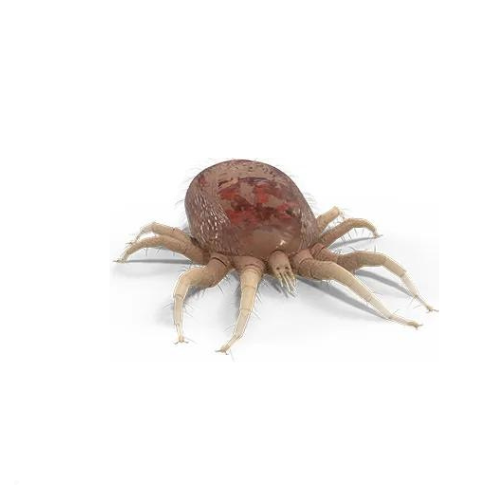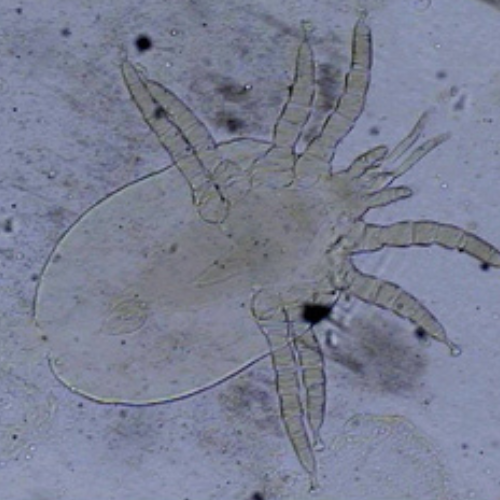Northern Fowl Mite
Introduction to
The northern fowl mite (Ornithonyssus sylviarum) is a parasitic pest that primarily affects poultry and wild birds. These tiny, blood-feeding mites can cause significant discomfort and health issues in infested birds, leading to decreased egg production, weight loss, and even death in severe cases. They are a concern for poultry farmers and bird enthusiasts alike. Understanding the biology, habits, and effective prevention methods for northern fowl mites is crucial for maintaining healthy flocks and preventing infestations.
Recognition
Northern fowl mites are tiny, about 0.8 mm in length, and dark brown to black in color. They have eight legs and a round body, covered with fine hairs. Under magnification, their mouthparts are visible and adapted for piercing and sucking blood. These mites are often found around the vent area of birds, where they feed. Infested birds may appear restless, have damaged feathers, and exhibit signs of anemia. The presence of northern fowl mites is often indicated by a dark, dirty appearance of the feathers due to the accumulation of mites, eggs, and excrement.
Biology
Northern fowl mites undergo a simple metamorphosis with four life stages: egg, larva, nymph, and adult. Females lay eggs on the host bird, which hatch into six-legged larvae. These larvae molt into nymphs, which then develop into adults. The entire lifecycle can be completed in as little as a week under optimal conditions, leading to rapid population growth. Adult mites spend their entire life on the host, feeding on blood several times a day. Females can lay hundreds of eggs during their lifespan, contributing to the rapid increase in mite numbers. Northern fowl mites can survive for several weeks off the host, making them challenging to control.
Habits
Northern fowl mites prefer to infest birds, particularly poultry such as chickens, turkeys, and game birds. They are often found in poultry houses, aviaries, and nest boxes. These mites are most active during cooler months but can infest birds year-round. They feed primarily around the vent area, causing irritation, feather damage, and blood loss. Infested birds may show signs of anemia, decreased egg production, and weight loss. Heavy infestations can lead to the death of the host. Northern fowl mites are transferred between birds through direct contact and can also spread via contaminated equipment, clothing, and housing.
Prevention
Preventing northern fowl mite infestations involves a combination of good husbandry practices and regular monitoring. Quarantine new birds before introducing them to the flock to prevent the spread of mites. Regularly inspect birds for signs of mite infestation, particularly around the vent area. Clean and disinfect poultry houses, nest boxes, and equipment to remove mites and eggs. Use appropriate insecticidal sprays or dusts as a preventive measure, focusing on areas where mites are likely to be found. Maintain good hygiene and sanitation practices to reduce the risk of mite infestations and ensure the health of the flock.
Professional
If northern fowl mites become a persistent problem, professional pest control services can provide effective solutions. STL Pest Control offers comprehensive treatments to eliminate mite populations from poultry houses and aviaries. Their technicians are trained to identify mite infestations and apply appropriate acaricides and integrated pest management techniques. In severe cases, they may recommend ongoing maintenance plans to keep mite populations at manageable levels. Professional services ensure thorough and long-lasting control, providing peace of mind and a healthier environment for birds.



Our Office









